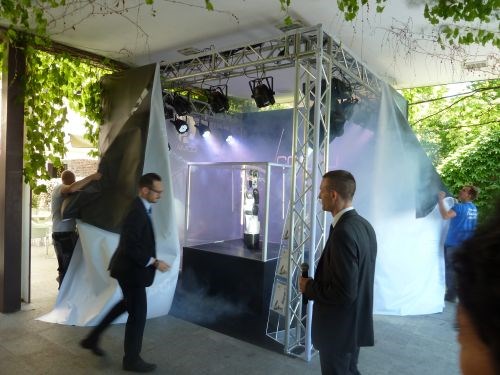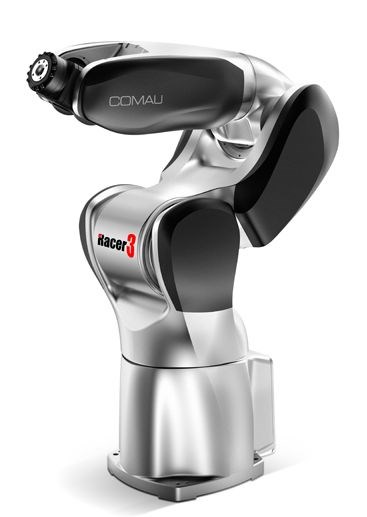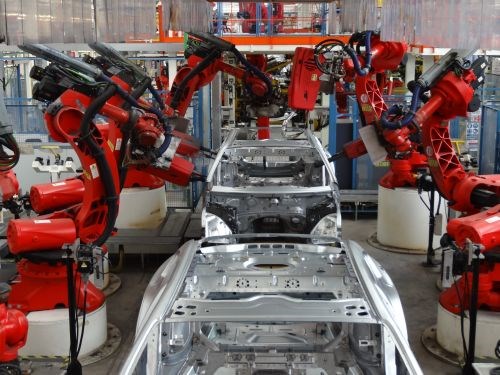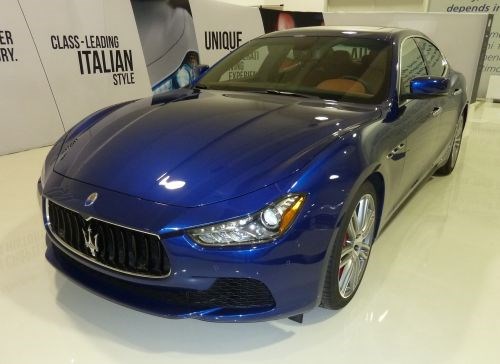Comau Introduces Racer3 Robot
This lightweight, high-speed design provides robotic options for companies of all sizes involved in a wide variety of industrial applications.
Share





Comau’s Racer3 is introduced to members of the international trade press during an advance event near company headquarters in Turin, Italy.
Known for heavy payload robots primarily found in the automotive industry, Comau recently introduced the Racer3 at a launch event in Turin, Italy, where it is headquartered. The Racer3 represents a new design for the company, in that it is a cost-effective model targeting small- to medium-size companies and those found in emerging economies.
Made of high-strength aluminum, the Racer3 is a high-speed, six-axis articulated robot with a payload of 3 kg and a reach of 600 mm. It weighs 30 kg, allowing for a variety of mounting options, including benches, walls, ceilings and inclined supports. While the Racer3 was designed for industries such as food and beverage, electronics, plastics and metalworking, its speed, light weight and flexibility make it an attractive choice for a wide variety of applications.
The launch—held at the Castello di Rivoli—was followed by a visit to Maserati’s AVV Giovanni Agnelli plant in Grugliasco, on the outskirts of Turin, which features 85 Comau robots in its chassis assembly operation alone. The Maserati facility produces the well-known Quattroporte and Ghibli luxury sedans.

The Racer3 is lightweight, extremely fast, and an attractive option for small- to medium-size manufacturing and assembly operations.

Some 85 Comau robots are found at the heart of the Maserati AVV Giovanni Agnelli plant in Grugliasco, on the outskirts of Turin.

The Maserati plant in Turin produces the Quattroporte and Ghibli models, the latter of which is shown here.
Related Content
-
4 Steps to a Cobot Culture: How Thyssenkrupp Bilstein Has Answered Staffing Shortages With Economical Automation
Safe, economical automation using collaborative robots can transform a manufacturing facility and overcome staffing shortfalls, but it takes additional investment and a systemized approach to automation in order to realize this change.
-
Using the Toolchanger to Automate Production
Taking advantage of a feature that’s already on the machine tool, Lang’s Haubex system uses the toolchanger to move and store parts, making it an easy-to-use and cost-effective automation solution.
-
Cutting Part Programming Times Through AI
CAM Assist cuts repetition from part programming — early users say it cuts tribal knowledge and could be a useful tool for training new programmers.




















.png;maxWidth=300;quality=90)
